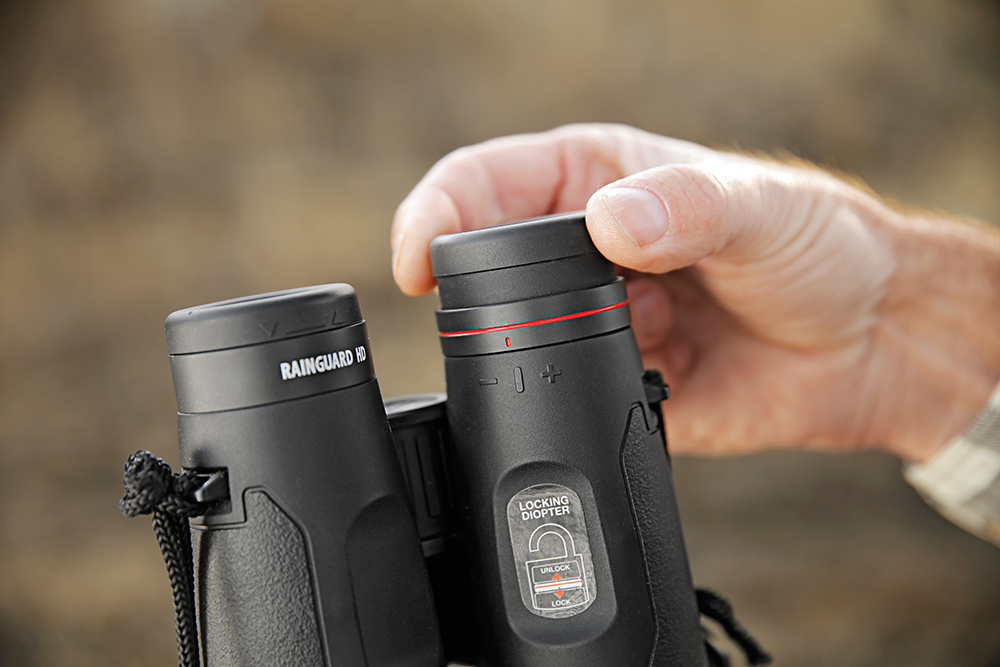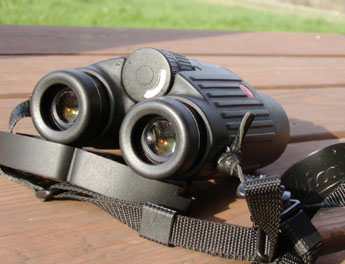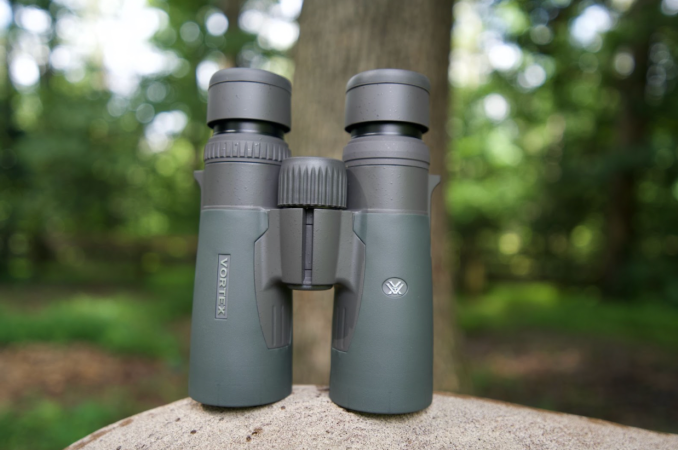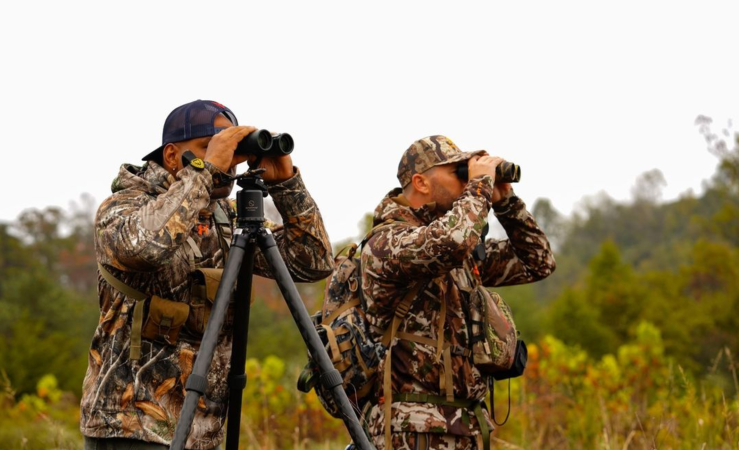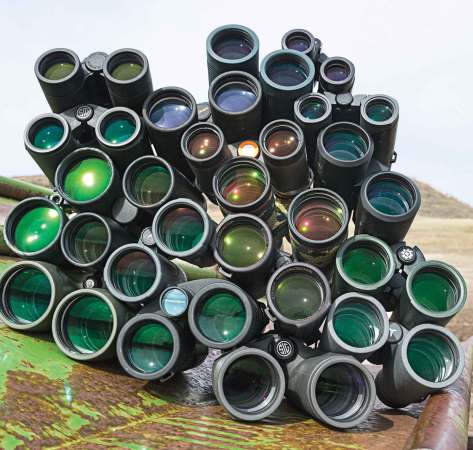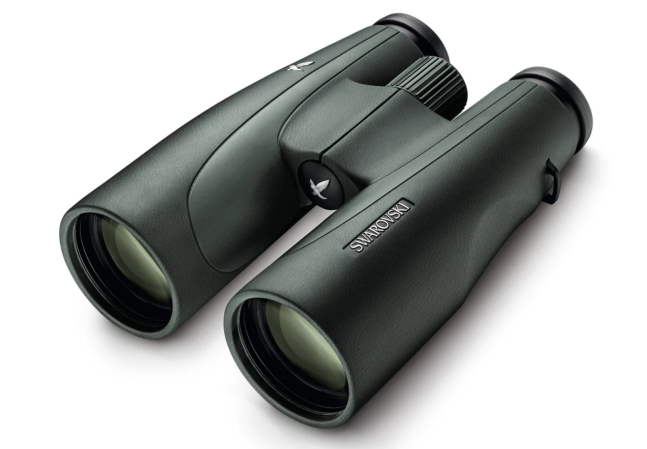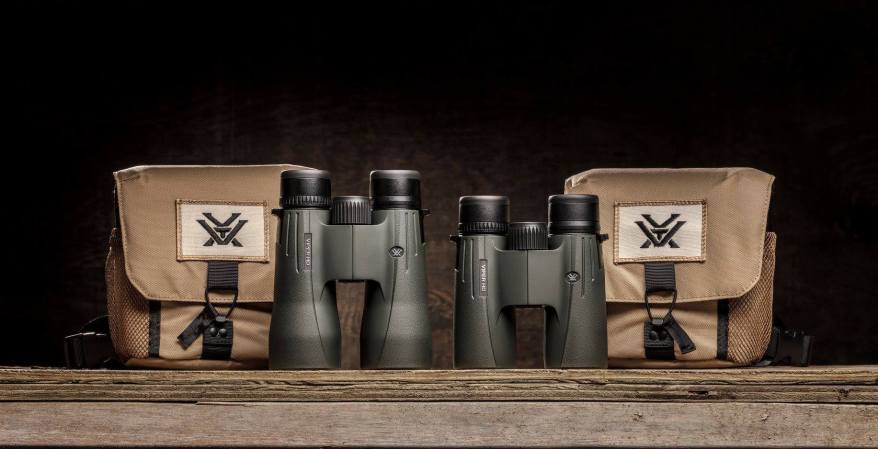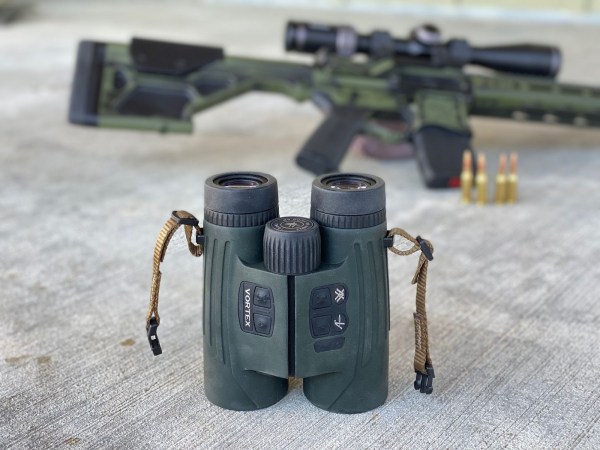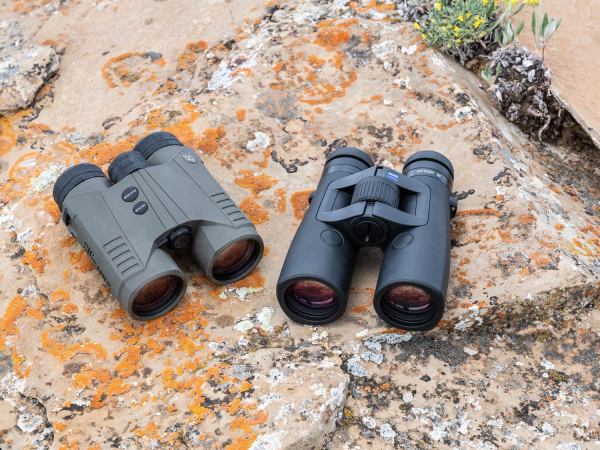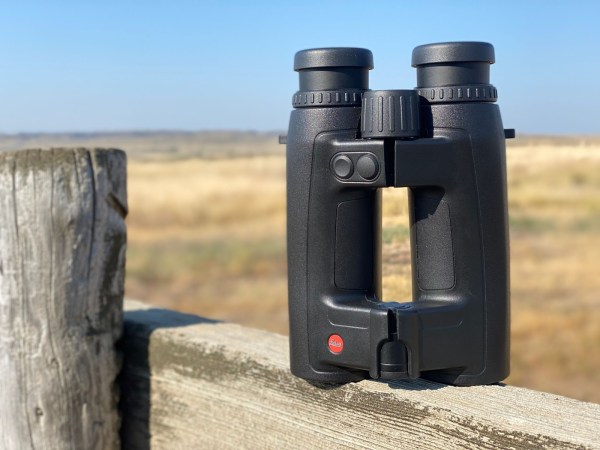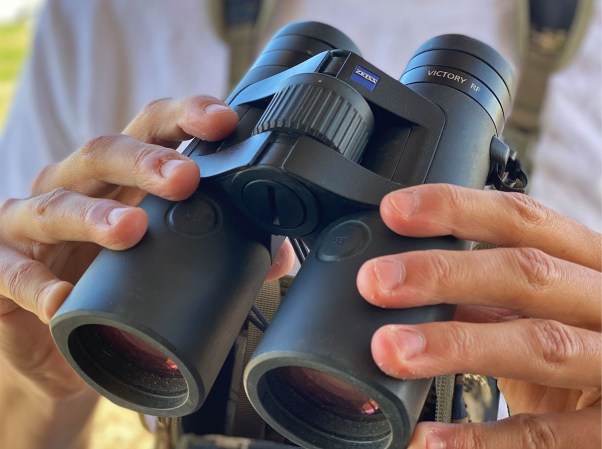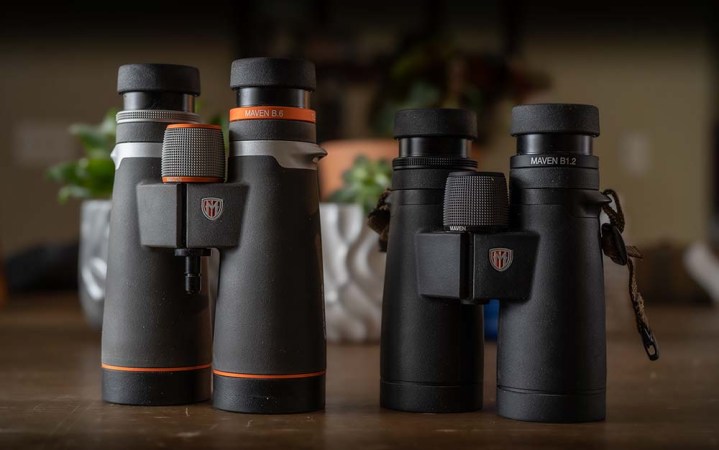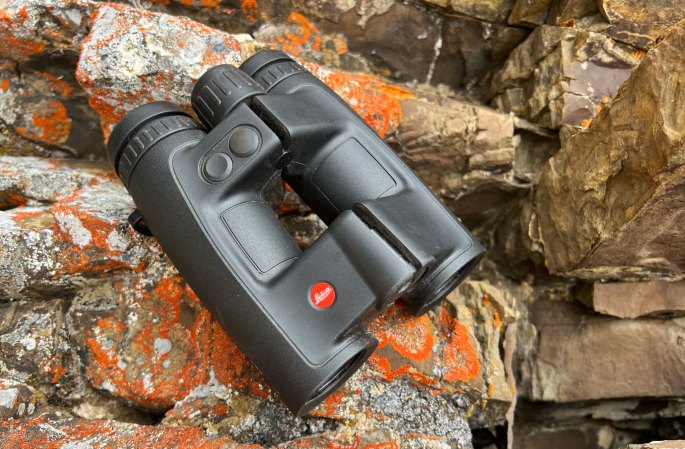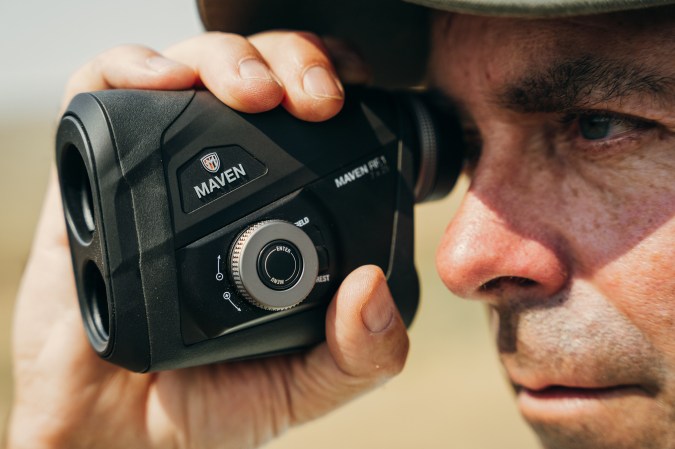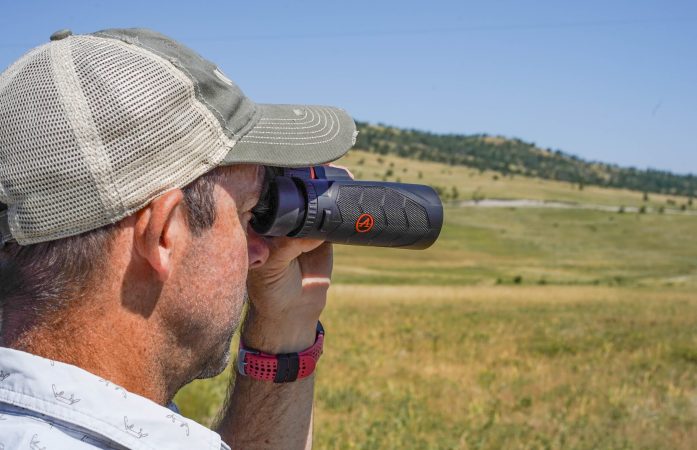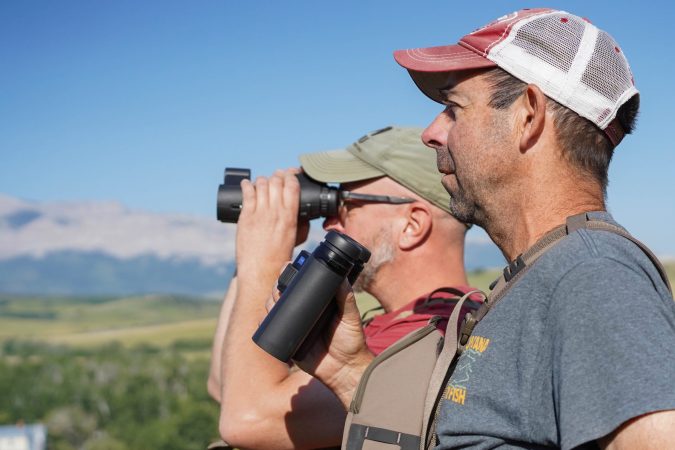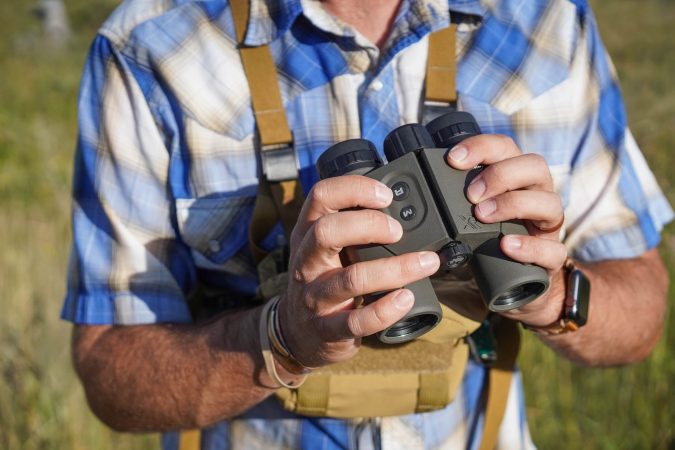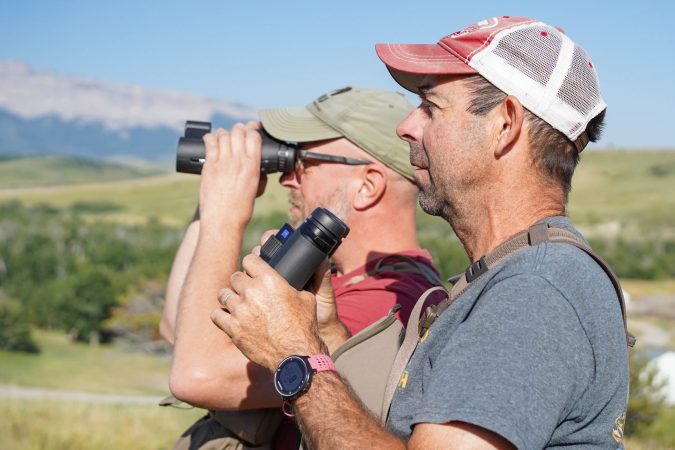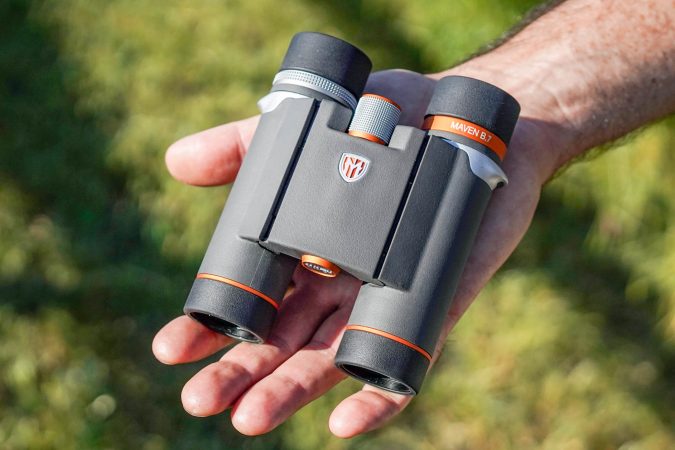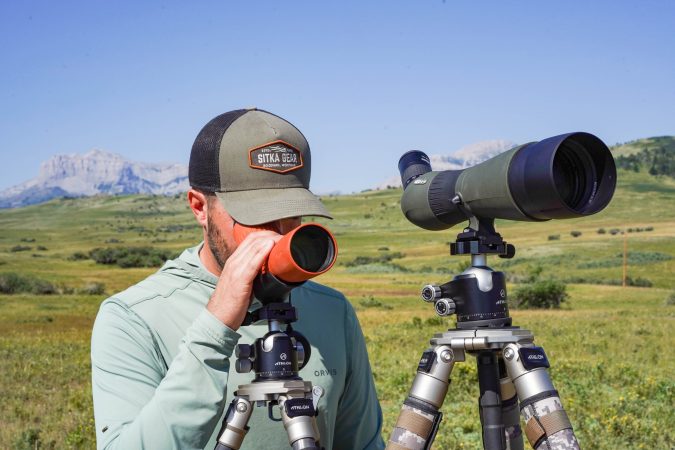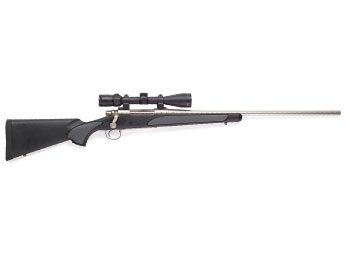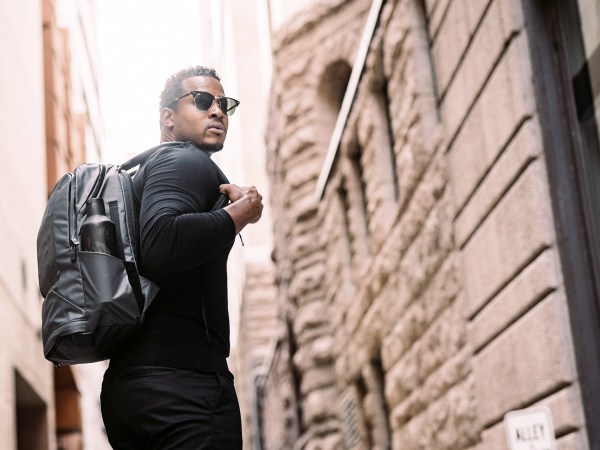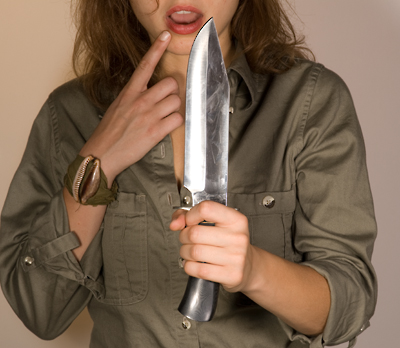We may earn revenue from the products available on this page and participate in affiliate programs. Learn More ›
Besides the central focus knob and the diopter (that little dial that focuses the right barrel), the only adjustable features on a binocular are the eyecups. But many hunters don’t seem to know how to adjust them so that they perform the job for which they are designed.
Many of my hunting buddies twist their binocular’s cups all the way out, so that they are fully extended, and they keep them there no matter the conditions. That’s great for blocking peripheral light just after sunup or just before sunset, but the fully extended cups are probably limiting their field of view and may also be promoting fogged lenses.
Here are the pros and cons of each of the three standard eyecup positions.
Fully Retracted
In this position, in which the eyecups are dialed right down to the ocular lens, the lens is exposed to the elements and may collect dust and grit. But because your eye can get closer to the lens, you can typically see a wider field of view. That’s important if you’re scanning an expansive area or are trying to observe an object on the periphery of the image. For those of us with deep-set eyes, this is the most comfortable position, as we can rest the retracted cups on our pronounced brows.
Eyeglass wearers will find this the most comfortable position, too. That’s because the eye relief required by most eyeglass users is about 12mm, approximately the distance from the eyeglass lens to the pupil. In that case, you want the front of your eyeglass lens to be as close as possible to the binocular’s ocular lens, and the only way to achieve that distance is with the eyecups dialed down.
Middle Extension
As you might guess, this middle position is the best for the widest variety of conditions. It allows for a decent field of view, it protects the ocular lens from dust, and it blocks a pretty fair amount of peripheral light. If you keep your eyecups at one position, this is probably the most useful. It typically puts the user’s pupil about 12mm to 15mm from the ocular lens, so the eye relief should be comfortable for a majority of users.
Fully Extended
This position, which puts the eye about 20mm from the optic’s lens, protects the ocular lens and blocks peripheral light, but it also limits the field of view. In binoculars with the most dramatic eyecup extension, the field of view can be limited by about 20 percent, effectively turning your 10X binocular into a 12X.
But there’s another hazard with full eyecup extension. It promotes lens fogging in cold conditions. During extended glassing sessions, the warmth from your face gets trapped in the space between your eye and the cold lens. The difference in temperature causes fogging. If this happens routinely, consider lowering the eyecups for what you expect will be long glassing sessions.

